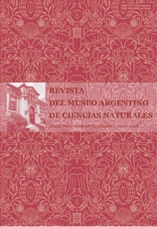Relaciones cuantitativas polen-clima actual para el pastizal pampeano: primeros resultados
Resumen
Quantitative relationship between modern pollen and climate for the Pampa grassland: first results. We examine modern pollen, potential vegetation and climate relationship for the Pampa grassland and their ecotone with the xerophytic woodland of Argentina using isopollen maps, scatter and percentage diagrams and DCA. These analyses are based on an array of 119 modern pollen samples extending between 34º-41º lat S and 56º-67º long W. Four potential vegetation units were defined in NE-SW gradient. Results between four pollen variables (xerophytic woodland, Poaceae, aquatics and Asteraceae subf. Asteroideae) and TMA (mean annual temperature), PMA (mean annual precipitation) and DH (hydric availability) are presented. All pollen variables show significant correlation with PMA and DH. DH is the main ecological factor that explain pollen assemblages distribution. Despite human impact on Pampa grassland there is a good correspondence between potential vegetation units and pollen samples. This results suggest the potential of this database for quantitative climate reconstructions, especially the hydrological regime.
Texto completo:
PDFEnlaces refback
- No hay ningún enlace refback.

This work is licensed under a Creative Commons Attribution 3.0 License.

